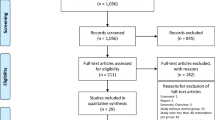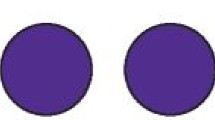Abstract
Objective
To assess the effectiveness of atraumatic restorative treatment (ART) performed 4 years ago in babies suffering from early childhood caries (ECC), and to compare the clinical performance of ART atraumatic restorations performed with two different high-viscosity glass ionomer cements (GIC).
Materials and methods
This was a longitudinal follow-up of a randomized, double-blind, split-mouth-type clinical trial. The initial sample was composed of 100 deciduous molars with occlusal lesions in 25 children with ages between 18 and 36 months who received ART with two different GICs: Ketac Molar Easymix® (3 M ESPE) and Vitro Molar® (DFL). The clinical assessments were performed by a trained, blind examiner gauged by the parameters assessed in 1, 2, and 4 years (ART and USPHS criteria).
Results
For the analysis of the clinical performance of ARTs between the different GICs, the chi-square and Mann–Whitney tests were applied (p < 0.05). In the 4 years of evaluation, the sample was composed by 76 ARTs and 19 children, with 94.7% of the treatments having inactivated the cavity process. The total success percentage of the ARTs was 94%, 87.5%, and 82.9%, in 1, 2, and 4 years of follow-up, respectively. Moreover, among the GICs studied, this difference was not statistically significant (p > 0.05) (ClinicalTrials.gov NCT03756025).
Conclusion
ART was effective in handling ECC, with an excellent clinical performance of ART restorations, for both GICs, during the 4 years of follow-up.
Clinical relevance
ART, with both GIC studied, is an alternative therapy for ECC.

Similar content being viewed by others
References
Weinstein P (1998) Public health issues in early childhood caries. Community Dent Oral Epidemiol 26:84–90
Berkowitz RJ (2003) Causes, treatment and prevention of early childhood caries: a microbiologic perspective. J Can Dent Assoc 69:304–307
Listl S, Galloway J, Mossey PA, Marcenes W (2015) Global economic impact of dental diseases. J Dent Res 94:1355–1361. https://doi.org/10.1177/0022034515602879
Kassebaum NJ, Bernabé E, Dahiya M, Bhandari B, Murray CJ, Marcenes W (2015) Global burden of untreated caries: a systematic review and metaregression. J Dent Res 94:650–658. https://doi.org/10.1177/0022034515573272
Featherstone JB (2004) The continuum of dental caries—evidence for a dynamic disease process. J Dent Res 83(Spec Issue C):C39–C42
Newbrun E (1989) Effectiveness of water fluoridation. J Public Health Dent 49(5):279–289
Marinho VC, Higgins JP, Sheiham A, Logan S (2004) Combinations of topical fluoride (toothpastes, mouthrinses, gels, varnishes) versus single topical fluoride for preventing dental caries in children and adolescents. Cochrane Database Syst Rev 1:CD002781
Sheiham A, James WP (2015) Diet and dental caries—the pivotal role of free sugars reemphasized. J Dent Res 94:1341–1347. https://doi.org/10.1177/0022034515590377
World Health Organization (2015) Guideline: sugars intake for adults and children. World Health Organization, Geneva
American Academy of Pediatric Dentistry (AAPD) (2003) Policy on early childhood caries (ECC): unique challenges and treatment options. Pediatr Dent 24(Suppl):24–25
Graves CE, Berkowitz RJ, Proskin HM, Chase I, Weinstein P, Billings R (2004) Clinical outcomes for early childhood caries: influence of aggressive dental surgery. J Dent Child 71:114–117
Fraiz FC, Walter LRF (2001) Estudo de fatores associados à cárie dental em crianças que recebem atendimento odontológico precoce [study of factors associated with dental caries in children receiving early dental care]. Pesqui Odontol Bras 15:201–207
Tinanoff N, Reisine S (2009) Update on early childhood caries since the surgeon general's report. Acad Pediatr 9:396–403
Fontana M (2015) The clinical, environmental, and behavioral factors that foster early childhood caries: evidence for caries risk assessment. Pediatr Dent 37:217–225
Feldens CA, Vítolo MR, Drachler ML (2007) A randomized trial of the effectiveness of home visits in preventing early childhood caries. Community Dent Oral Epidemiol 35:215–223. https://doi.org/10.1111/j.1600-0528.2006.00337.x
Feldens CA, Giugliani ERJ, Duncan BB, Drachler ML, Vítolo MR (2010) Long-term effectiveness of a nutritional program in reducing early childhood caries: a randomized trial. Community Dent Oral Epidemiol 38:324–332. https://doi.org/10.1111/j.1600-0528.2010.00540.x
Plutzer K, Spencer AJ (2008) Efficacy of an oral health promotion intervention in the prevention of early childhood caries. Community Dent Oral Epidemiol 36:335–346. https://doi.org/10.1111/j.1600-0528.2007.00414.x
Harrison RL, Veronneau J, Leroux B (2012) Effectiveness of maternal counseling in reducing caries in Cree children. J Dent Res 91:1032–1037. https://doi.org/10.1177/0022034512459758
Frencken JE, Sognpaisan Y, Phantumvanit P (1994) Atraumatic restorative technique: evaluation after one year. Dent J London 44:460–464
Frencken JE, Holmgren CJ (2001) Tratamento Restaurador Atraumático (ART), para a cárie dentária [Atraumatic Restorative Treatment (ART) for dental caries]. Ed. Santos, São Paulo
Ersin N, Candan U, Aykut A, Önçag Ö, Eronat C, Kose T (2006) A clinical evaluation of resin-based composite and glass ionomer cement restorations placed in primary teeth using the ART approach – results at 24 months. Am Dent Assoc 137:1529–1536
van Den Dungen GM, Huddleston Slater AE, van Amerongen WE (2004) ART or conventional restorations? A final examination of proximal restorations in deciduous molars. Ned Tijdschr Tandheelkd 111:345–349
Lo E, Holmgren C (2001) Provision of atraumatic restorative treatment (ART) restorations to Chinese pre-school children at 30 month evaluation. Int J Paed Dent 11:3–10
Honkala E, Behbehani J, Ibricevic H, Kerosuo E, Al-Jame G (2003) The atraumatic restorative treatment (ART) approach to restoring primary teeth in a standard dental clinic. Int J Pediatr Dent 13:172–179
van Gemert-Schriks MCM, van Amerongen WE, Ten Cate JM, Aartman IHA (2007) Three-year survival of single- and two-surface ART restorations in a high-caries child population. Clin Oral Investig 11:337–343. https://doi.org/10.1007/s00784-007-0138-8
Mickenautsch S, Yengopal V, Banerjee A (2010) Atraumatic restorative treatment versus amalgam restoration longevity: a systematic review. Clin Oral Investig 14:233–240. https://doi.org/10.1007/s00784-009-0335-8
Figueiredo MC, Granville-Garcia AF (1996) A utilização do cimento ionômero de vidro FUJI IX na técnica de restauração atraumática (ART) em dentes decíduos [The use of FUJI IX glass ionomer cement in the technique of atraumatic restoration (ART) in deciduous teeth]. Rev Fac Odont UPF 1:31–38
Souza MIC, Medeiros UV, Santos PKG (1999) Avaliação clínica de alterações da microflora oral por meio da utilização do tratamento restaurador atraumático [clinical evaluation of oral microflora alterations through the use of atraumatic restorative treatment]. Rev Bras Odontol 56:34–37
Bresciani E, Nogueira DA, Henostroza QN, Barata TJE, Lauris JRP, Navarro MFL (2002) Influência do isolamento absoluto sobre o sucesso do tratamento restaurador atraumático (ART), em cavidades II em dentes decíduos [Influence of absolute isolation on the success of atraumatic restorative treatment (ART) in II cavities in deciduous teeth]. Rev Fac Odontol Bauru 10:231–237
van’t Hof MA, Frencken JE, van Palenstein Helderman WH, Holmgren CJ (2006) The atraumatic restorative treatment (ART) approach for managing dental caries: a meta-analysis. Int Dent J 56:345–351
Figueiredo MC, Guarienti CAD, Michel JA, Sampaio MS (2008) Comprehensive attention to oral health in early childhood: a longitudinal evaluation of the infant of the infant clinic program of the Federal University of Rio Grande do Sul, Brazil. Acta Odontol Latinoam 21:181–187
Ryge G (1980) Clinical criteria. Int Dent J 30:347–358
Ainamo J, Bay I (1975) Problems and proposals for recording gingivitis and plaque. Int Dent J 25:229–235
Lo EC, Holmgren CJ, Hu D, van Palenstein Helderman W (2007) Six-year follow up of atraumatic restorative treatment restorations placed in Chinese school children. Community Dent Oral Epidemiol 35:387–392
Frencken JE, Taifour D, van’t Hof MA (2006) Survival of ART and amalgam restorations in permanent teeth after 6.3 years. J Dent Res 85:622–626
Holmgren CJ, Lo EC, Hu D, Wan H (2000) ART restorations and sealants placed in Chinese school children: results after three years. Community Dent Oral Epidemiol 28:314–320
Ercan E, Dülgergil CT, Soyman M, Dalli M, Yildirim I (2009) A field-trial of two restorative materials used with atraumatic restorative treatment in rural Turkey: 24-month results. J Appl Oral Sci 17:307–314
Farag A, van der Sanden WJM, Abdelwahab H, Frencken JE (2011) Survival of ART restorations assessed using selected FDI and modified ART restoration criteria. Clin Oral Invest 15:409–415. https://doi.org/10.1007/s00784-010-0403-0
Leal SC, Bezerra ACB, Toledo AO (2002) Effectiveness of teaching methods for toothbrushing in preschool children. Braz Dent J 13:133–136
Conrado CA, Maciel SM, Oliveira MR (2004) A school-based oral health educational program: the experience of Maringá-PR, Brazil. J Appl Oral Sci 12:27–33
Junqueira FP (2004) Avaliação de um programa de tratamento restaurador atraumático modificado em crianças institucionalizadas de 02 a 05 anos. 89 p. Dissertação (Mestrado) [Evaluation of a modified atraumatic restorative treatment program in institutionalized children from 02 to 05 years old. 89 p. Dissertation (Master degree)] – Universidade Camilo Castelo Branco, Campinas
Guarienti CAD (2007) Avaliação da efetividade do Tratamento Restaurador Atraumático (ART) inserido em uma creche do município de Porto Alegre – RS. 93 p. Dissertação (Mestrado) [ Evaluation of the effectiveness of Atraumatic Restorative Treatment (ART) inserted in a day care center in the city of Porto Alegre - RS. 93 p. Dissertation (Master degree)] – Universidade Federal do Rio Grande do Sul, Porto Alegre
Amorim RG, Leal SC, Frencken JE (2012) Survival of atraumatic restorative treatment (ART) sealants and restorations: a meta-analysis. Clin Oral Invest 16:429–441. https://doi.org/10.1007/s00784-011-0513-3
Faccin ES, Ferreira SH, Kramer PF, Ardenghi TM, Feldens CA (2009) Clinical performance of ART restorations in primary teeth: a survival analysis. J Clin Pediatr Dent 33:295–298
Mallow PK, Durward CS, Klaipo M (1998) Restoration of permanent teeth in young rural children in Cambodia using the atraumatic restorative treatment (ART) technique and Fuji II glass ionomer cement. Int Paediatr Dent 8:35–40
Smales RJ, Yip HK (2000) The atraumatic restorative treatment (ART) approach for primary: review of literature. Pediatr Dent 22:294–298
Yip HK, Smales RJ (2002) Glass ionomer cements used as fissure sealants with the atraumatic restorative treatment (ART) approach: review of literature. Int Dent J 52:67–70
Rahimtoola S, van Amerongen E (2002) Comparison of two tooth-saving preparation techniques for one-surface cavities. ASDC J Dent Child 69:16–26
Acknowledgements
Mircelei Saldanha Sampaio and Cinthya Aline das Dores Guarienti are acknowledged for the help in the children’s care and the conduction of the clinical trial.
Funding
The study was supported by Federal University of Rio Grande do Sul (UFRGS) School of Dentistry, Rio Grande do Sul, Porto Alegre, Brazil.
Author information
Authors and Affiliations
Corresponding author
Ethics declarations
Conflict of interest
The authors declare that they have no conflict of interest.
Ethical approval
All procedures performed in the study involving human participants were in accordance with the ethical standards of the institution and with the 1964 Helsinki Declaration and its later amendments or comparable ethical standards.
Informed consent
Informed consent was obtained from all individual participants included in the study.
Additional information
Publisher’s Note
Springer Nature remains neutral with regard to jurisdictional claims in published maps and institutional affiliations.
Rights and permissions
About this article
Cite this article
Faustino-Silva, D.D., Figueiredo, M.C. Atraumatic restorative treatment—ART in early childhood caries in babies: 4 years of randomized clinical trial. Clin Oral Invest 23, 3721–3729 (2019). https://doi.org/10.1007/s00784-019-02800-8
Received:
Accepted:
Published:
Issue Date:
DOI: https://doi.org/10.1007/s00784-019-02800-8




